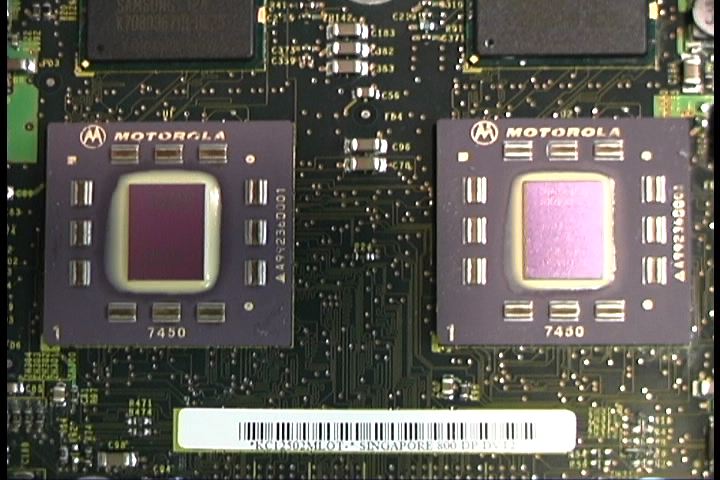Basic Transistor Physics
David Giessel
University of Alaska Fairbanks
Physics 212 Web Project, Spring 2003
David Giessel
University of Alaska Fairbanks
Physics 212 Web Project, Spring 2003
| Index | Transistor Basics | Temperature vs Frequency | Gate and Wiring size | Transistor Count | Bibliography | |

Dual PowerPC 7450 (G4) module
The first transistor was demonstrated on Dec. 23, 1947, at Bell Labs by William Shockley. This new invention consisting of P type and N type semiconductive materials (in this case germanium) has completely revolutionized electronics.

Ge transistor prototype at Bell Labs courtesy of Transistor History 101
Transistors quickly replaced vacuum tubes in almost all applications (most notably those in discrete logic). Today when we think of transistors the first thing that comes to mind is computers. Advances in transistor technology and manufacturing processes as well as new materials being used for the semiconductor matrix and wiring have led to smaller, faster, cheaper, lower power transistors. Some of the basic principles behind semiconductor behavior and the restrictions currently faced by modern transistors will be discussed in the following pages.
First, let's look at some Transistor Basics.